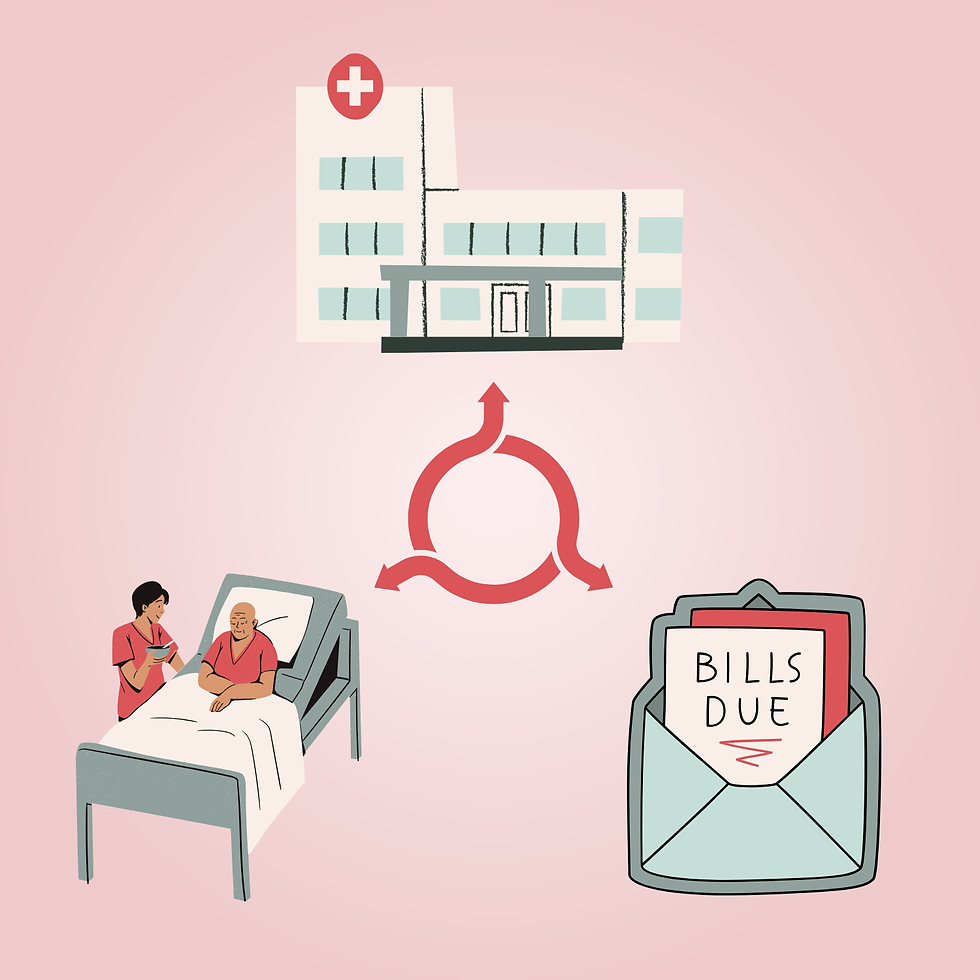Inequities in Cancer Screenings for Transgender Patients
- Olivia Kim
- Dec 5, 2022
- 3 min read
In the United States, there are 1.4 million individuals that identify as transgender, which is a term used to describe someone whose gender identity does not correspond to the one assigned at birth [1].
While medical research within the transgender community is limited—even moreso within cancer-specific healthcare— there is strong evidence suggesting that this population is likely to experience greater incidence of cancer based on increased risk, socioeconomic obstacles, and lack of cancer screenings [2]. For any individual, whether they be cisgender or transgender, it is important to receive proper and regular screenings for cancer, but transgender people face more obstacles in getting these screenings, especially when it comes to birth-sex cancer screenings that may require the examination of sex organs they feel do not correspond to their gender. Even reaching a birth-sex based cancer screening is an obstacle for most transgender patients since it can be associated with feelings of unease and gender disphoria [3]. Reluctance to see primary care providers reduces vital opportunities to get screened for diseases, especially for cancers pertaining to birth-sex organs or cancers that have higher rates in certain sexes over another. Examples include screening for breast cancer, prostate cancer or cancers within the reproductive organs.

Not only does hesitancy of seeking clinical care for transgender patients stem from a high likelihood of experiencing gender dysphoria, but most clinicians are inadequately trained on protocol for recommending cancer screenings for transgender patients [3]. Only 30% of obstetricians and gynecologist providers in one study reported feeling comfortable treating transgender patients [2]. Among that 30%, 80% were willing to treat these patients, however, over half said they did not know the recommendations for breast cancer screening these individuals. A knowledge disparity is clearly present among healthcare providers for treating transgender people, especially when it comes to procedures that are generally more utilized by one gender over another.
Because there are no comprehensive transgender cancer screening guidelines, so those for cisgender individuals are applied. For example, 9.2.% fewer transgender women were up to date on cervical cancer screenings compared to cisgender women [3]. And rates of HIV are two times higher among the transgender population than cisgender men and ten times higher than in cisgender women [3]. While there is great lack of direction for those who are a transgender man or woman, there is even less guidance and research for those who identify as non-binary [3].
Even though the transgender population is at higher risk of a number of diseases such as HIV or conditions such as depression, many neglect seeking clinical treatment due to prior negative experiences of themselves or others. 41% of transgender patients report widespread discrimination in a healthcare environment [4]. Forms of discrimination could include being addressed as the wrong name or gender, not having access to an appropriate bathroom, or staff mistreating patients. Not only does fear of discrimination contribute to hesitancy to receive medical care, especially primary care in a non-emergency or gender affirming context, but lack of provider knowledge may reduce quality of care that transgender individuals may receive.
Comprehensive guidelines for physicians specific to caring for transgender popuations respectfully and equitably could increase the number of cancer screenings for transgender people and consequently decrease a health gap. Educating physicians on how to treat transgender patients and allow them to feel comfortable in a clinical setting is also important, and that is something that no one should be denied regardless of their gender identity.
Edited by: Deven Gupta
Graphic Designed by: Natalie Chou
References
Unger CA. Care of the transgender patient: a survey of gynecologists’ current knowledge and practice. J Women's Health (Larchmt). 2015;24(2):114–8. https://doi.org/10.1089/jwh.2014.4918.
Roznovjak, D., Petroll, A., & Cortina, C. S. (2021, January 4). Breast cancer risk and screening in transgender individuals - current breast cancer reports. SpringerLink. Retrieved November 28, 2022, from https://link.springer.com/article/10.1007/s12609-020-00403-x
Sterling, J., & Garcia, M. M. (2020, December). Cancer screening in the transgender population: A review of current guidelines, best practices, and a proposed care model. Translational andrology and urology. Retrieved November 28, 2022, from https://www.ncbi.nlm.nih.gov/pmc/articles/PMC7807311/
How Many Adults Identify as Transgender in the United States? UCLA School of Law, Williams Institute. Accessed October 15, 2020. <https://williamsinstitute.law.ucla.edu/publications/trans-adults-united-states/>



Comments